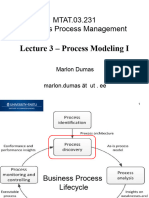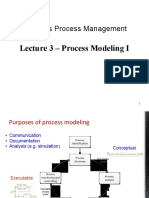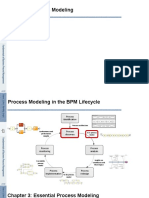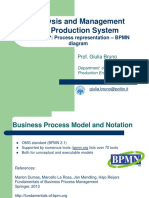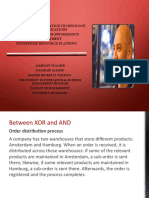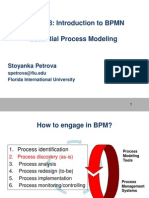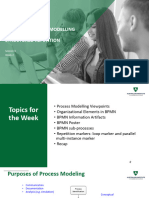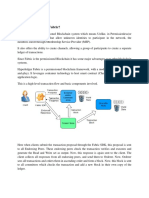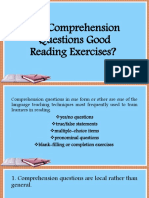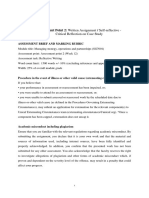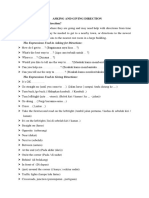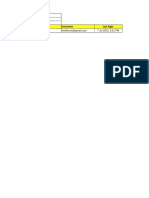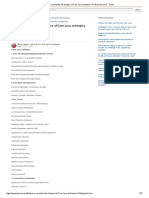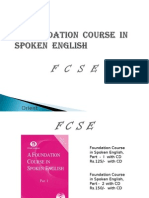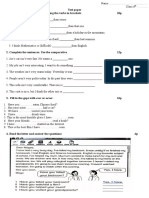0% found this document useful (0 votes)
20 views49 pagesLecture3 ProcessModeling1
The document outlines key concepts of process modeling, emphasizing the importance of managing business processes to enhance organizational performance. It introduces various modeling techniques, particularly BPMN, and discusses the structural elements of process models, including gateways and events. Additionally, it provides a detailed example of the order-to-cash process and guidelines for effective modeling practices.
Uploaded by
Trong Hung NguyenCopyright
© © All Rights Reserved
We take content rights seriously. If you suspect this is your content, claim it here.
Available Formats
Download as PPTX, PDF, TXT or read online on Scribd
0% found this document useful (0 votes)
20 views49 pagesLecture3 ProcessModeling1
The document outlines key concepts of process modeling, emphasizing the importance of managing business processes to enhance organizational performance. It introduces various modeling techniques, particularly BPMN, and discusses the structural elements of process models, including gateways and events. Additionally, it provides a detailed example of the order-to-cash process and guidelines for effective modeling practices.
Uploaded by
Trong Hung NguyenCopyright
© © All Rights Reserved
We take content rights seriously. If you suspect this is your content, claim it here.
Available Formats
Download as PPTX, PDF, TXT or read online on Scribd
/ 49

